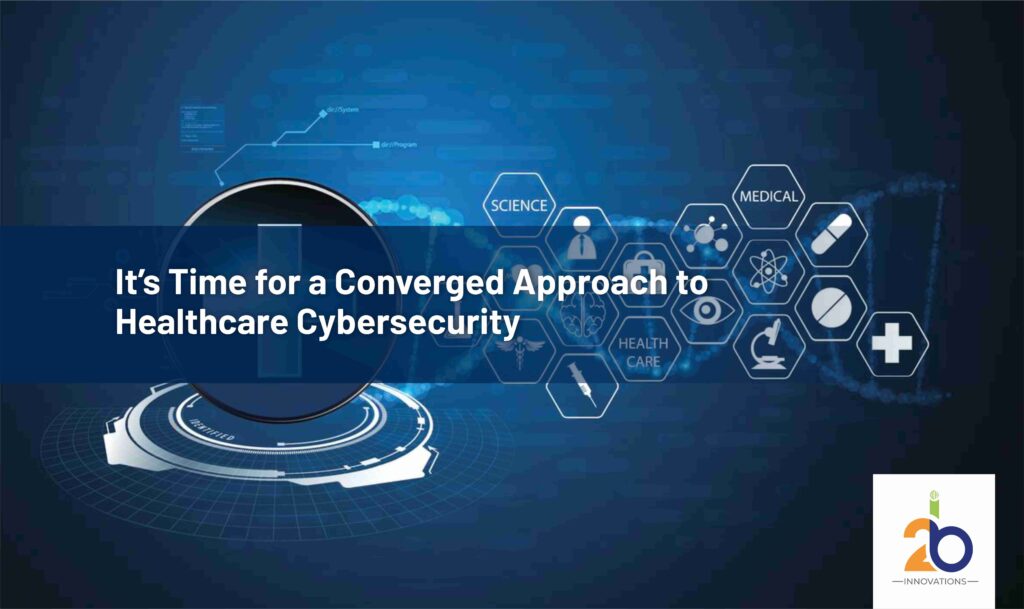
When several departments within an organization are assigned certain responsibilities, it is common for those departments to get inundated with their work and lose connection with one another. Furthermore, this is especially true during times of expansion or transition. There is a possibility that these distinct groupings, which are frequently referred to as “silos,” overlook the larger goals of the organization without intending to do so. In healthcare, such a disconnect might result in blunders and the loss of valuable time. Consequently, every person working for the organization must approach cybersecurity in a certain method. To secure individuals’ well-being and give care, we can successfully interact.
Siloed Teams Can Create Healthcare Cybersecurity Blind Spots : Choose Data Protection through Collaboration.
One major problem that has been reported these days is the online threats that healthcare groups are facing. Collaboration and teamwork are needed to make sure that information is safe. There needs to be cooperation between these groups to find and fix any flaws that hackers could use.
The report says that hackers have tried several attacks this year that have been successful, putting about two-thirds of healthcare groups at risk. Misleading emails and harmful software made providing services harder and kept people from getting patient information without permission.
A hacker team named the “Diaxin Team” has been attacking healthcare organizations since 2022. They used old software and stolen passwords and successfully accessed computer systems and records.
The White House recently launched the National Cybersecurity Strategy, which outlines how the government plans to deal with the growing risks in this area. A task group whose job is to develop cybersecurity measures will be in charge of allocating funds. Funds are initiated that will be used for cybersecurity research and development in line with the current plan.
Healthcare groups can improve how well protection methods work. Some examples are giving employees full training on spotting and avoiding phishing scams, fixing software bugs, and ensuring they use their passwords.
When the responsible authorities work together, they can protect patients’ privacy. Better protection against bad players getting in without permission.
Common Healthcare Cybersecurity Silos to Avoid
Healthcare organizations frequently operate independently in the realm of cybercrime. Consequently, teams have reduced collaboration and communication due to their objectives. Establishing group isolation and impeding collaborative efforts facilitates the ingress of hackers.
This is how these structures are constructed:
- IT Cybersecurity: This group is responsible for safeguarding the hospital’s systems and data, ensuring they are secure, accurate, and functioning properly.
- BioMed is an organization that investigates medical instruments and their optimal application for human benefit.
- Organizational units are referred to as “business units.” These divisions are responsible for the daily operations and tasks of the company.
Organizations within the hospital employ diverse tools and methodologies, often needing more awareness of the interrelationships and mutual reliance that may result from their efforts. Everyone desires to provide the highest quality of care and expedite the recovery of others.
Inadequate collaboration and communication can result in dangerous “cybersecurity blind spots.” Because of these gaps, it is difficult for crucial teams to perform their duties effectively. Even worse, they can disrupt patient care.
Healthcare organizations must eliminate these “silos” to improve team communication and collaboration. This can be accomplished by:
- Teamwork and collaboration by people from different geographical areas.
- Encourage people to enroll in programs where they learn about the dangers and optimal hacking methods.
- Proper strategies and instruments make it easy for all to achieve their goals.
- Regular monitoring and meetings to identify and address potential hazards.
Healthcare organizations can significantly strengthen their cybersecurity by eliminating these silos and encouraging collaboration. This will ensure that their clients receive quality care while safeguarding their information.
The Importance of Bridging the Healthcare Cybersecurity Divide
Think about a hospital currently working on its wireless network to improve security. With an understanding that the update won’t affect their devices, the security team works together with the team. But anyhow, several systems fail to reconnect after the update starts, hindering patient care.
What is the reason for this problem? The compromised devices’ wireless security standard is incompatible with the update. It would’ve been easy for the security team to fix this issue if they were aware of the problem beforehand. However, the fact that the necessary information was divided within a tool restricted the efficiency of both teams.
Therefore, with this situation, we can sum up that it is very important to resolve the cybersecurity gap in healthcare. Silos restrict advancement. Prevent organizations from becoming the future’s hospitals.
Why is bridging the divide is important?
- Improved patient outcomes: Collaboration allows for better security and operational efficiency, improving patient care.
- Smart hospitals: Breaking down silos enables the integration of tools and technologies needed for a smart hospital environment.
- Shared goals: A convergence project fosters collaboration among stakeholders from all departments, aligning them with the hospital’s vision and mission.
How can we bridge the divide?Integrating cybersecurity into healthcare silos is important for better patient care and an easy transition to smart hospitals. Developing awareness and interaction among different stakeholders through cross-functional collaboration is necessary to achieve this. Teams that share tools and technology increase security and productivity, and standard processes guarantee that everyone is working toward the same objectives. Also, proactive risk identification and reduction are made possible via open communication. By collaborating, healthcare organizations can build a safer, more effective, and patient-centered future.
Initiating Healthcare Cybersecurity Convergence
While there is a need for a convergence action in healthcare cybersecurity, its implementation must be carefully planned. All levels of management need to take an active role in ensuring its success. Creating diverse teams that work well together to address challenging problems is essential to success.
The setting up of a convergence culture and the growth of cross-functional cooperation can be based on three principles:
- Accept Diversity and Inclusion: Always work to create an environment at work that is open, transparent, and friendly or encourages a variety of opinions, experiences, and roles. This goes for positions, departments, backgrounds, and titles.
- Increase Transparency and Adaptability: Create an adaptable approach to problem-solving that accepts all recommendations and considers every point of view to provide creative solutions.
- Adopt a Common Language: Having a common language across the organization will help to increase communication. Ensure that everyone uses the same terms, from biomed engineers to IT professionals.
By implementing this into practice, healthcare companies can set the example for interconnection, the next phase of convergence. The capacity of disparate systems to function together without interruption is known as interoperability, and it is a critical component in advancing efficient healthcare delivery. To achieve convergence, an in-depth knowledge of all relevant business, medical, and IT devices and networks all over the XIoT (extended Internet of Things) is required.
The Scope of Successful Healthcare Cybersecurity Convergence
You need to be able to see everything connected to the network, even if it is not ordered, to use a unified approach to security and lowering risk. In the healthcare organization’s tech world, this ensures no holes or gadgets haven’t been found.
- The technology that is used for work (OT):
OT is often used in healthcare to keep the building running and safe for patient care by controlling power, freezers, air filters, heating and cooling, and other parts of an industrial building.
- The Internet of Things in health care:
The healthcare IoT includes all the medical tools and apps used to help doctors care for patients. Heart rate monitors, MRI machines, and CT scanners are some of the system’s monitoring tools. There are also medication machines and defibrillators that work in the real world. IoT in healthcare also has features that help people act, sense, and talk to each other. These features happen in the background and are easy to forget about.
- Health and the Internet of Things:
Digital tools are the only way for health to work. For example, online tools that help the hospital keep track of patients let them care for more people. The healthcare XIoT includes telemedicine. It would help if you remembered this because of how quickly healthcare has grown during an attack like COVID-19.
- Simple IoT:
A hospital might have phones, computers, TVs, and security cameras because they are all needed to run the hospital.
Bridging the Cyber-Physical Cybersecurity Gap in Healthcare
As healthcare technology becomes more networked, the methods for procuring, managing, and protecting devices must converge. Diverse local and distant technologies demand a comprehensive plan addressing healthcare operations’ cyber and physical components.
The current increase in cyberattacks highlights the importance of healthcare institutions using a “protect to enable” policy. This strategy necessitates integrating IT/security, BioMed, and commercial objectives to move healthcare into a future distinguished by hyperconnectivity, intelligence, and strong security.
While each organization’s journey is unique, success begins with cross-functional leadership and cooperation. Healthcare organizations may reach the ultimate aim of improved patient outcomes and increased financial value by collaborating.
How We Can Help Our Partners have developed an operational……eliminate future risks.
Medigate by Claroty has developed an innovative operational assessment framework called “The Real-Time Healthcare Convergence Maturity Assessment” (CMA). This online self-assessment tool can help your organization identify gaps in its security strategy to assess better and manage its enterprise risk. This framework provides a way for HDOs to assess their convergence maturity and determine the day-to-day risks they need to know about. Uncovering the areas of risk that live across traditional silos within your organization will allow you to address them head-on and eliminate future risks.



